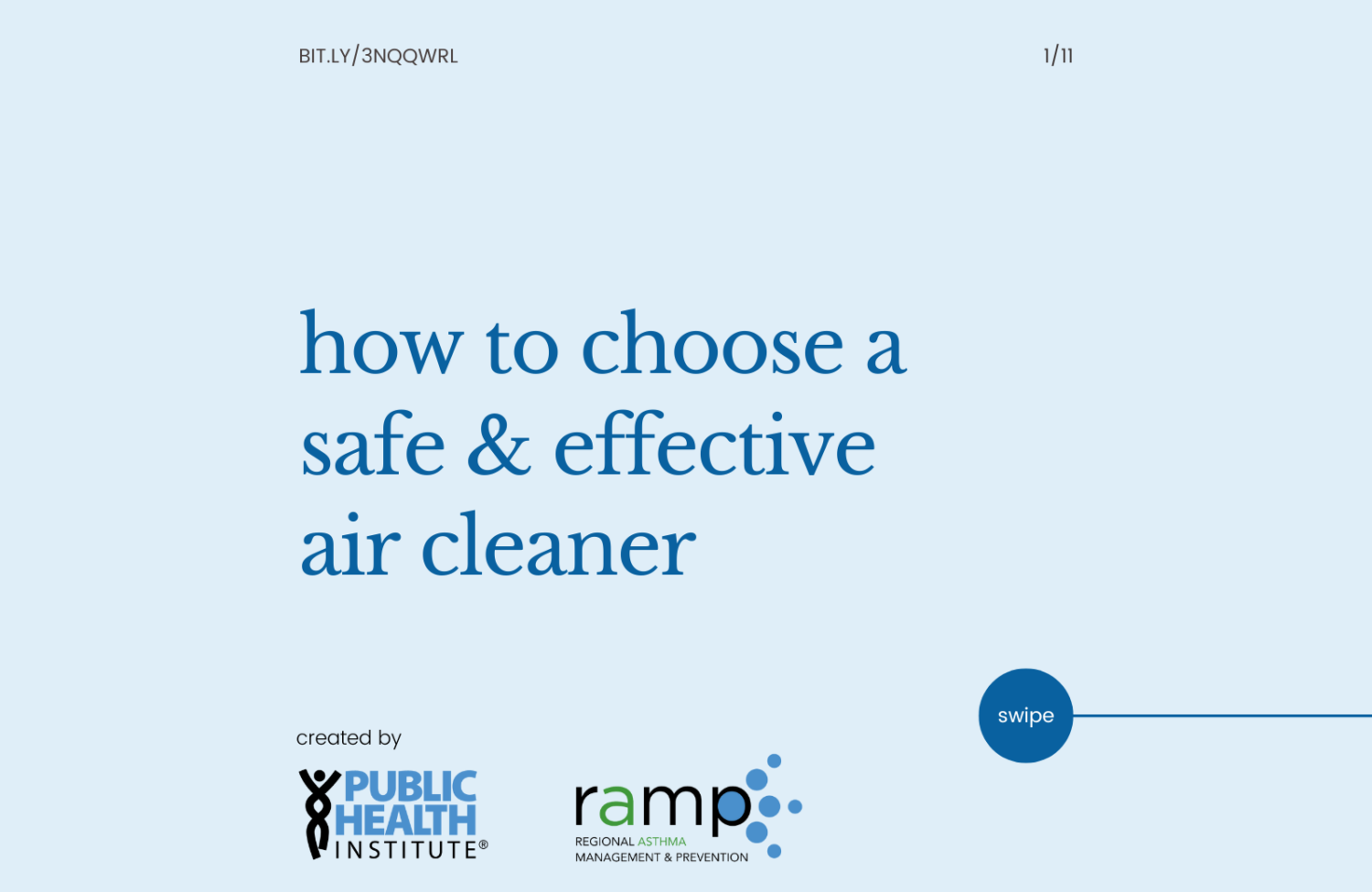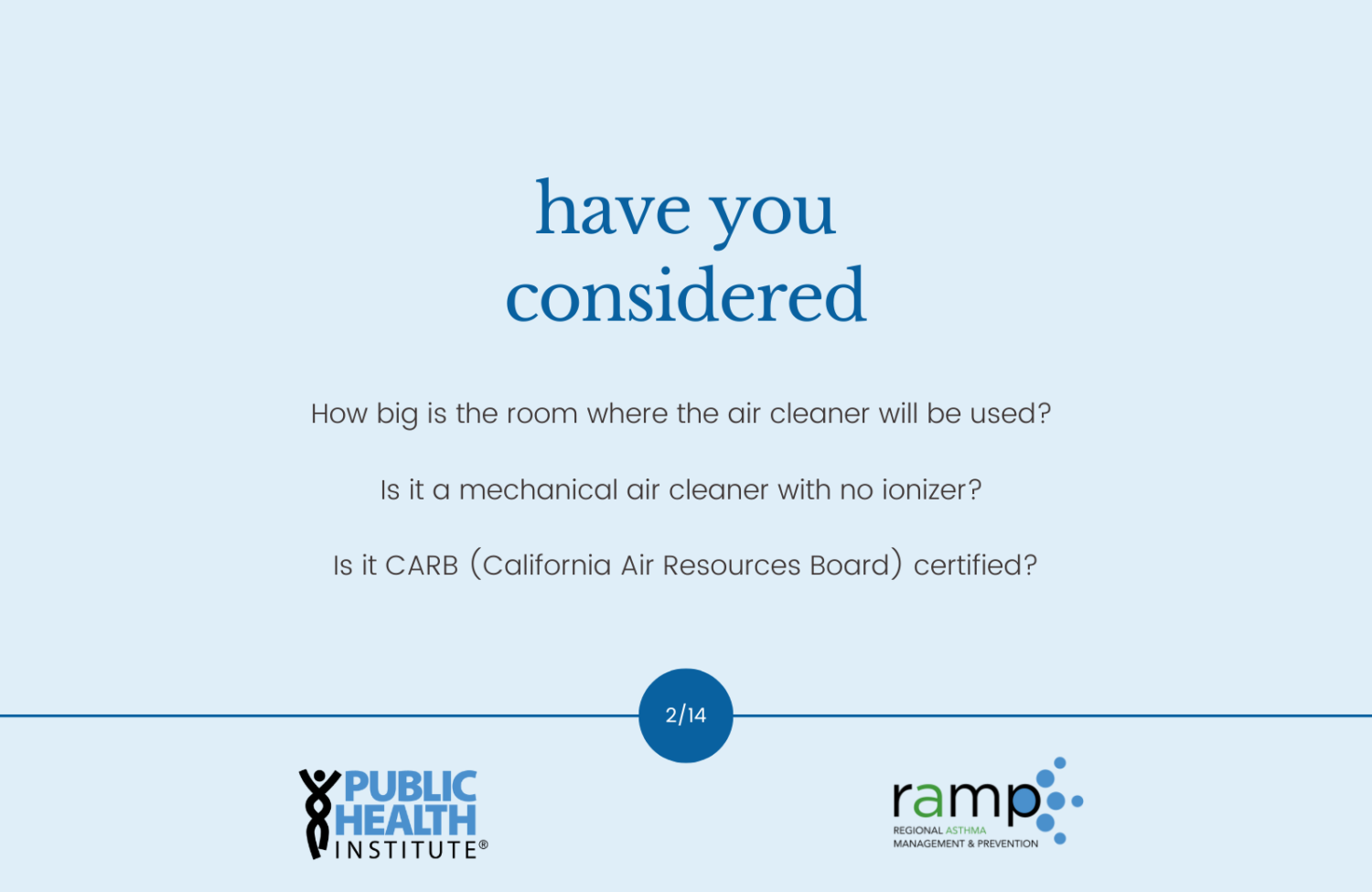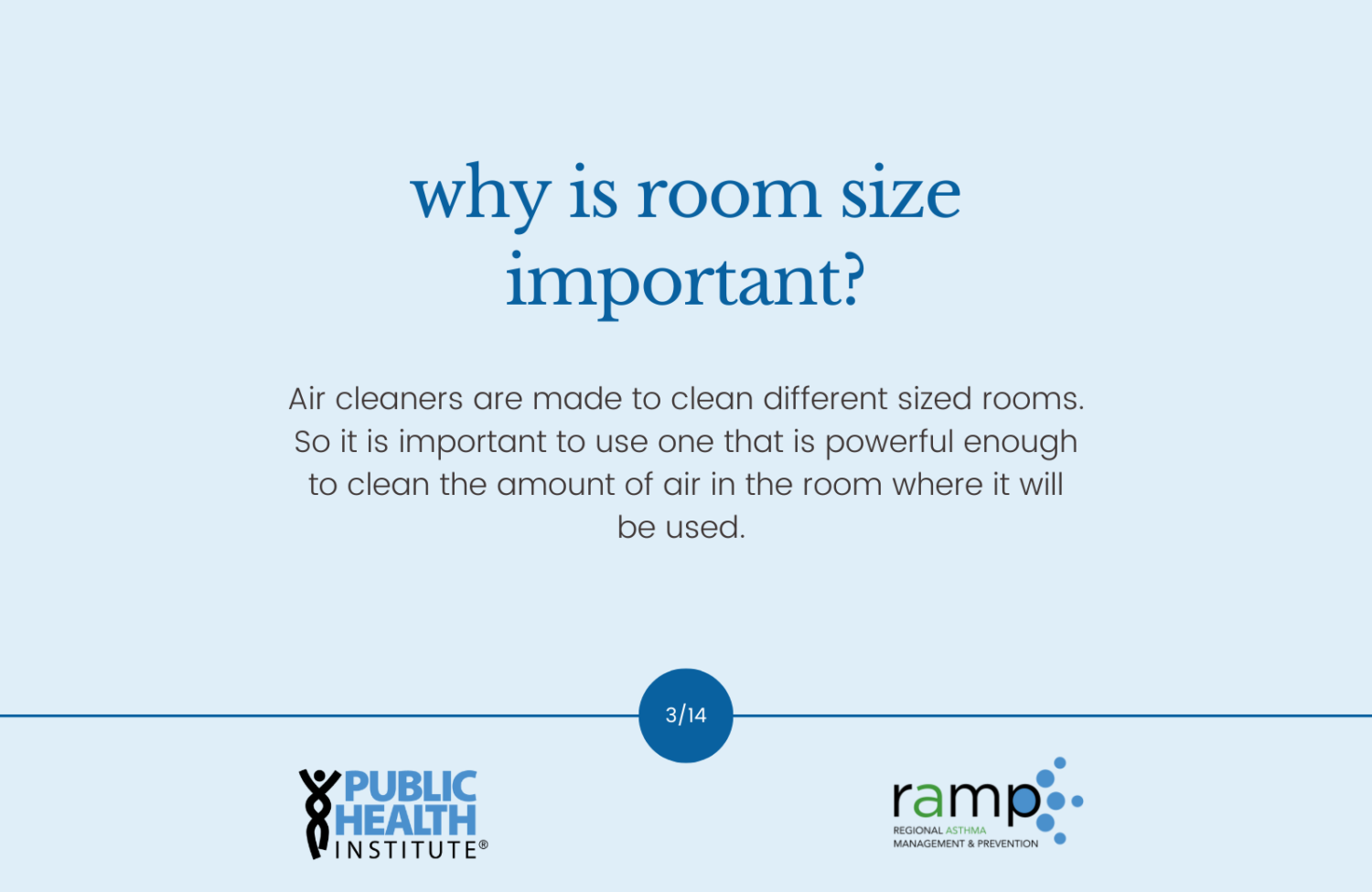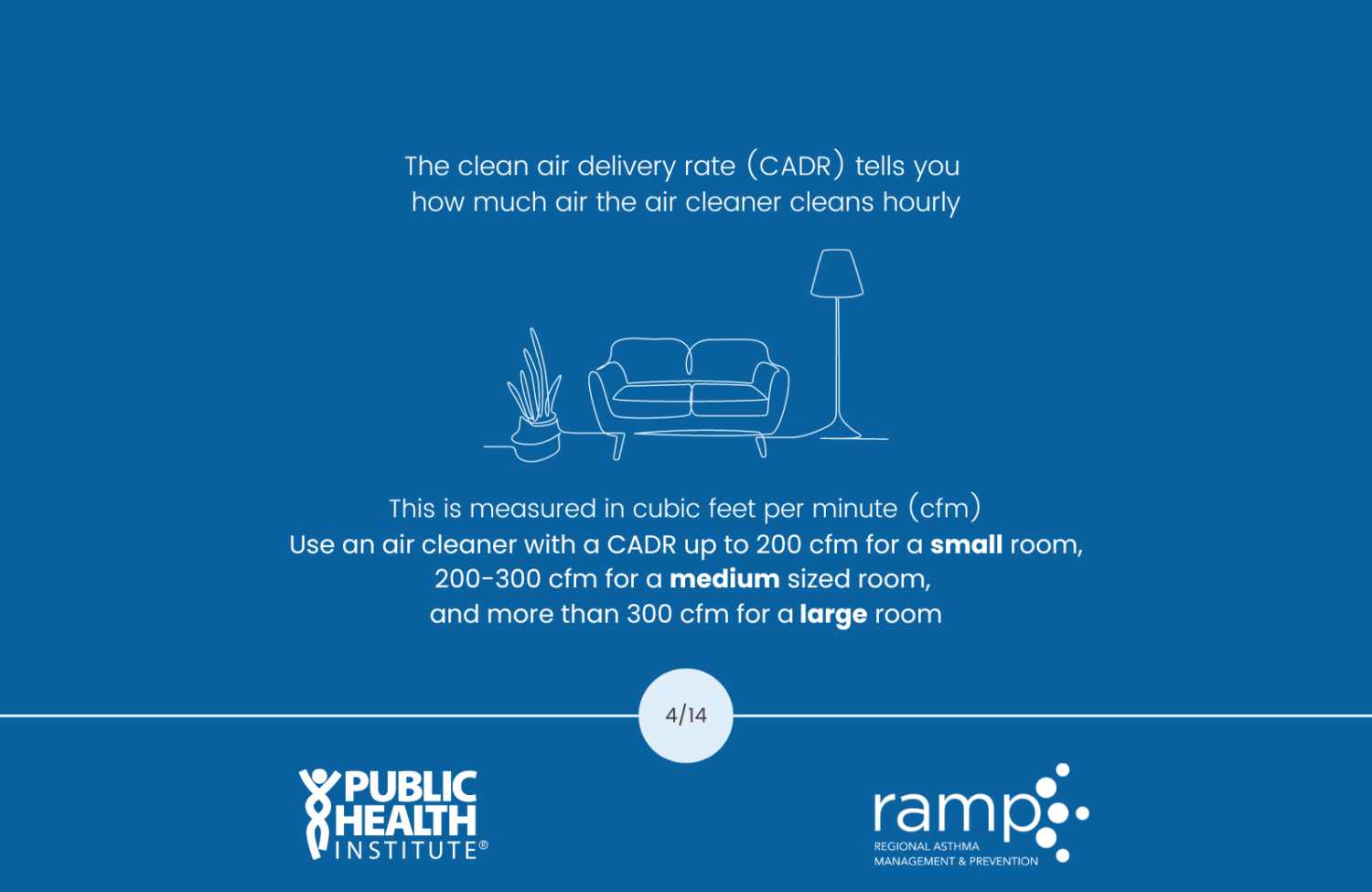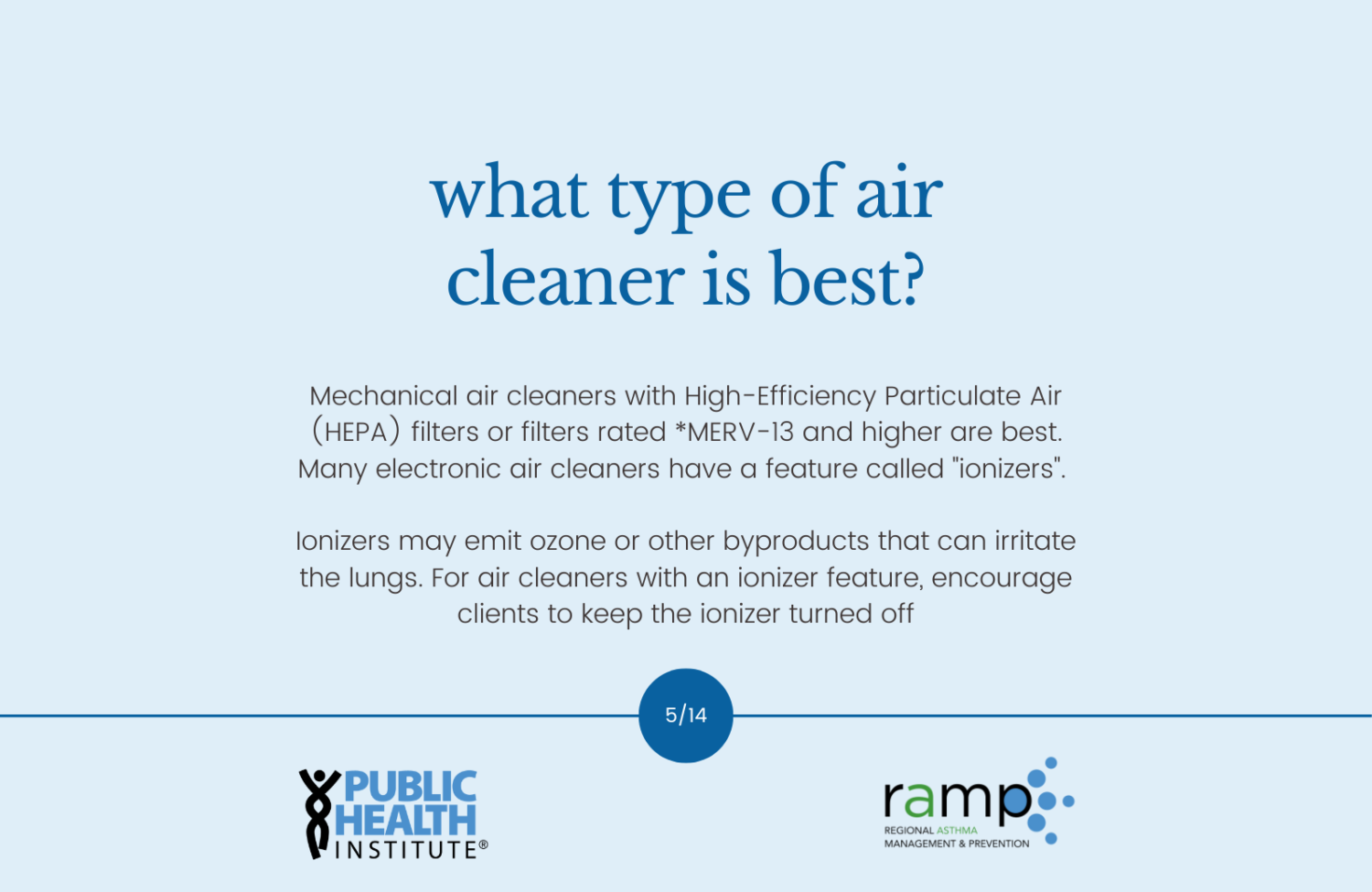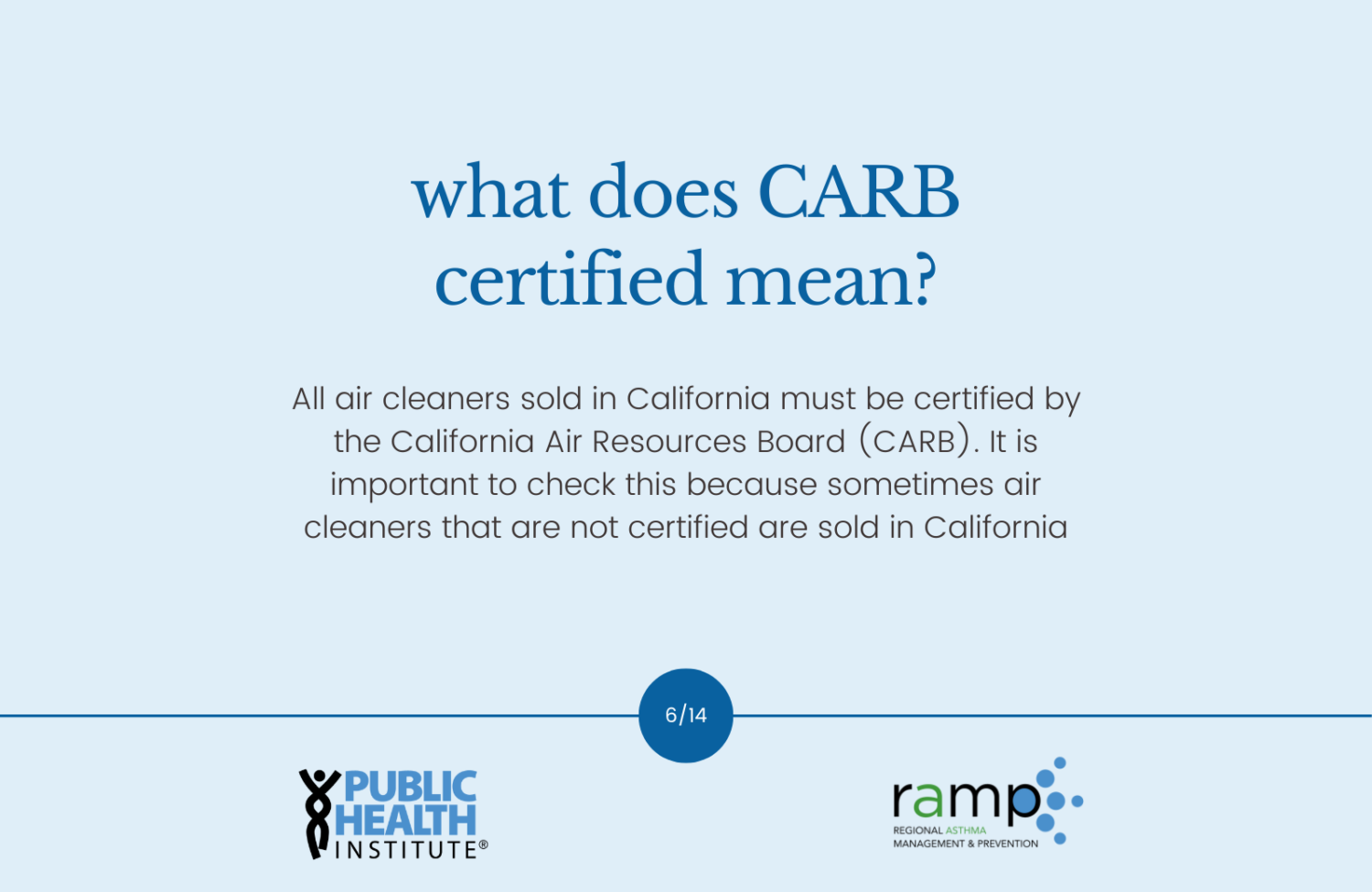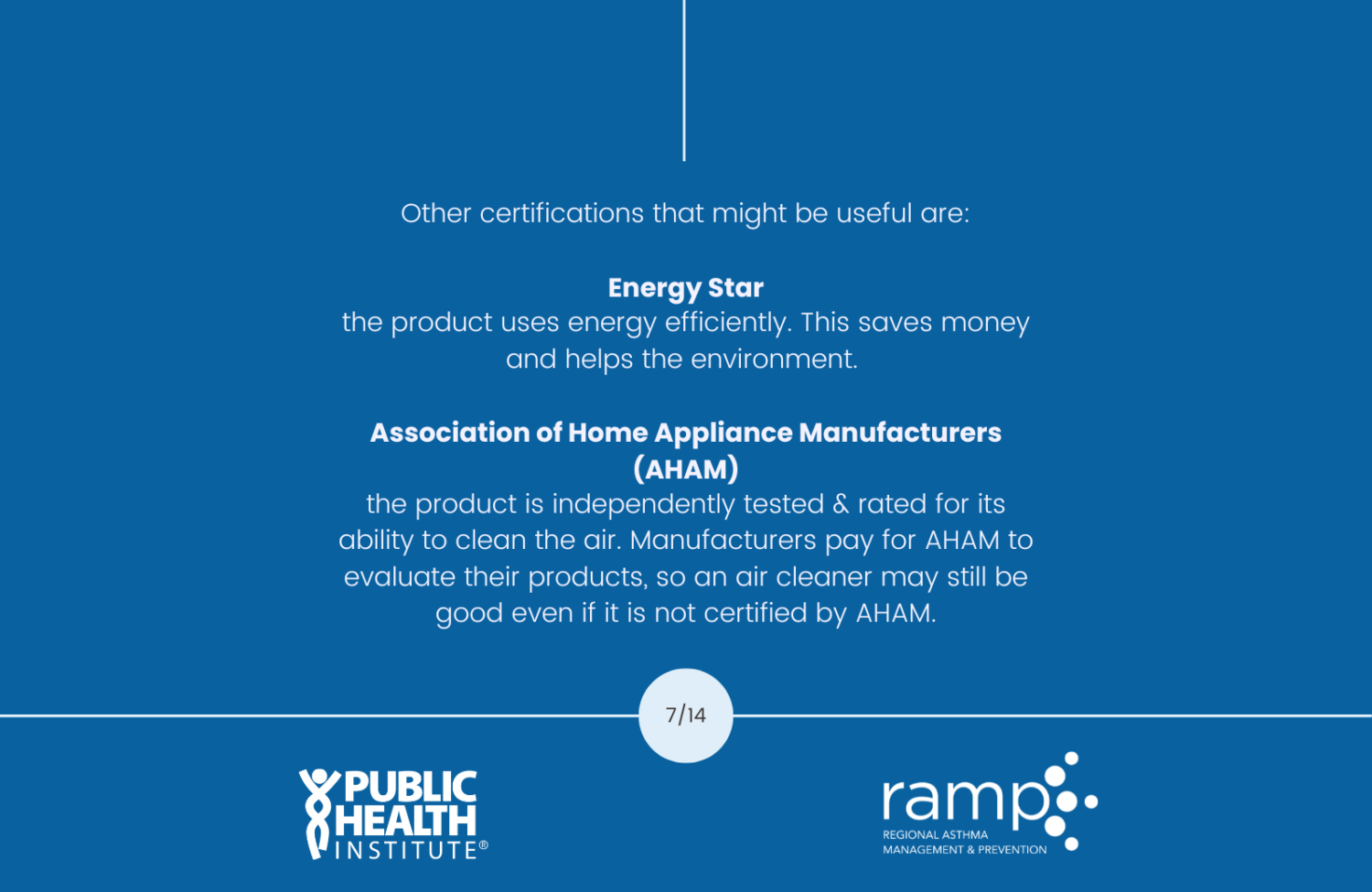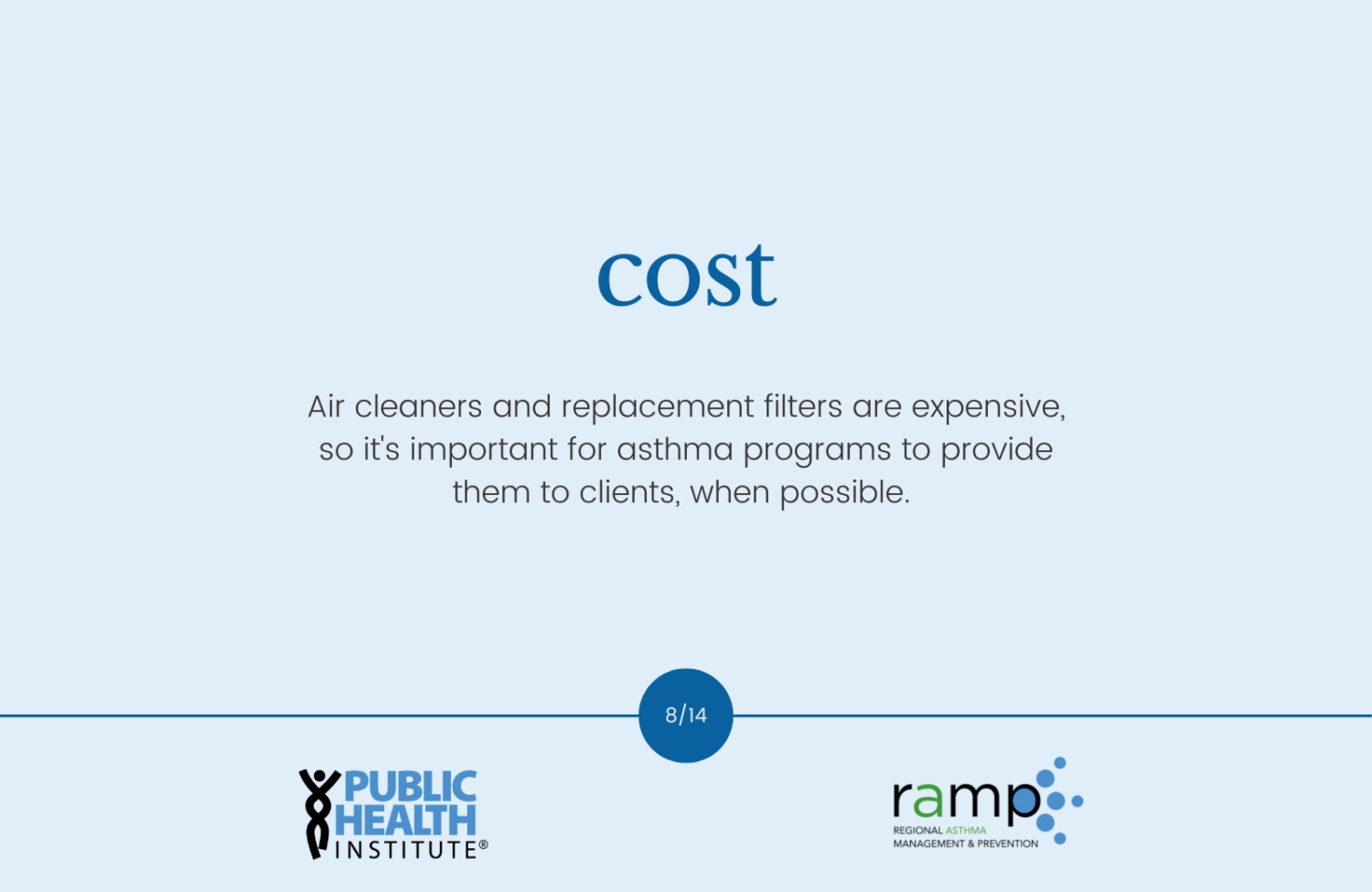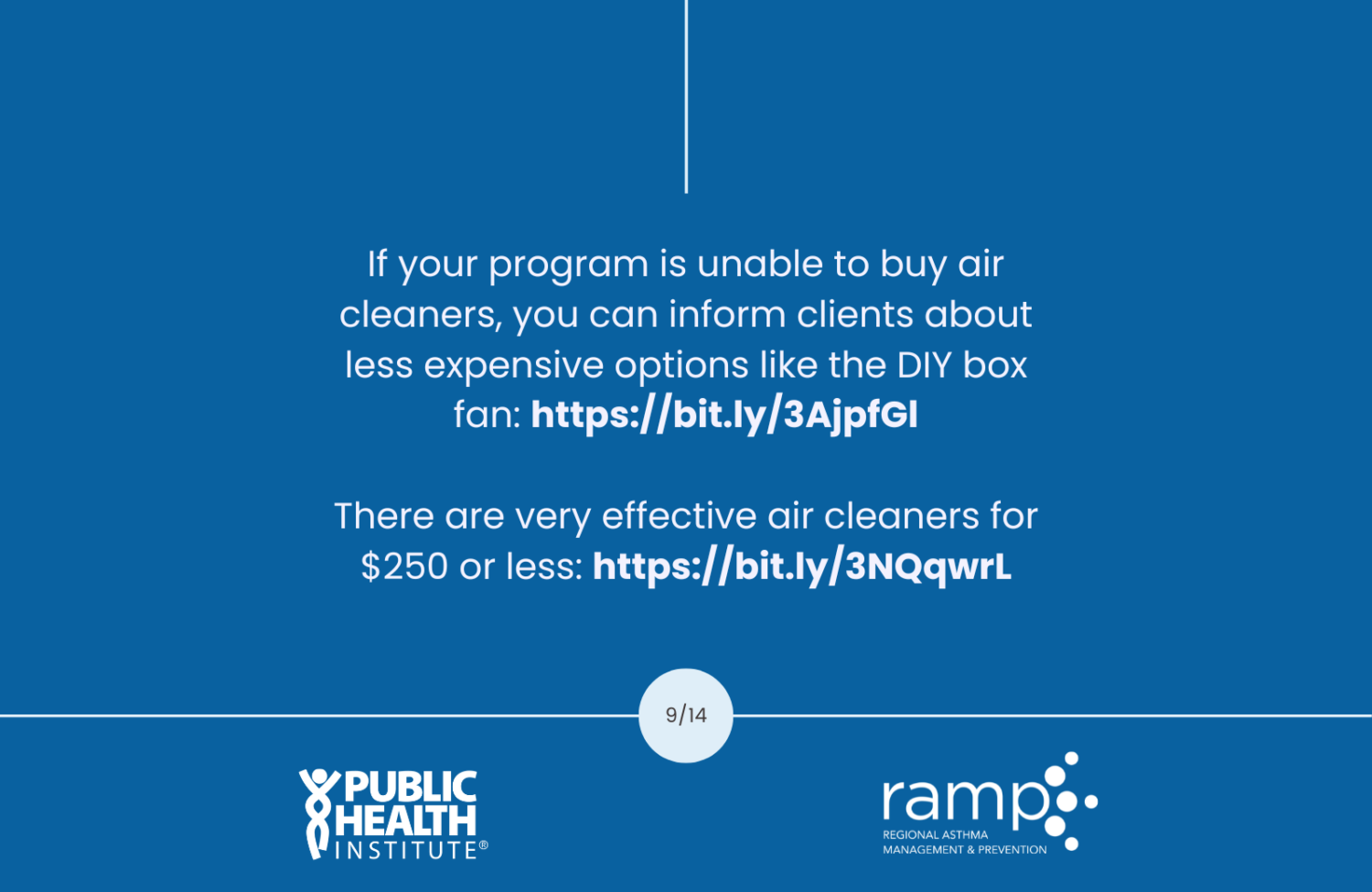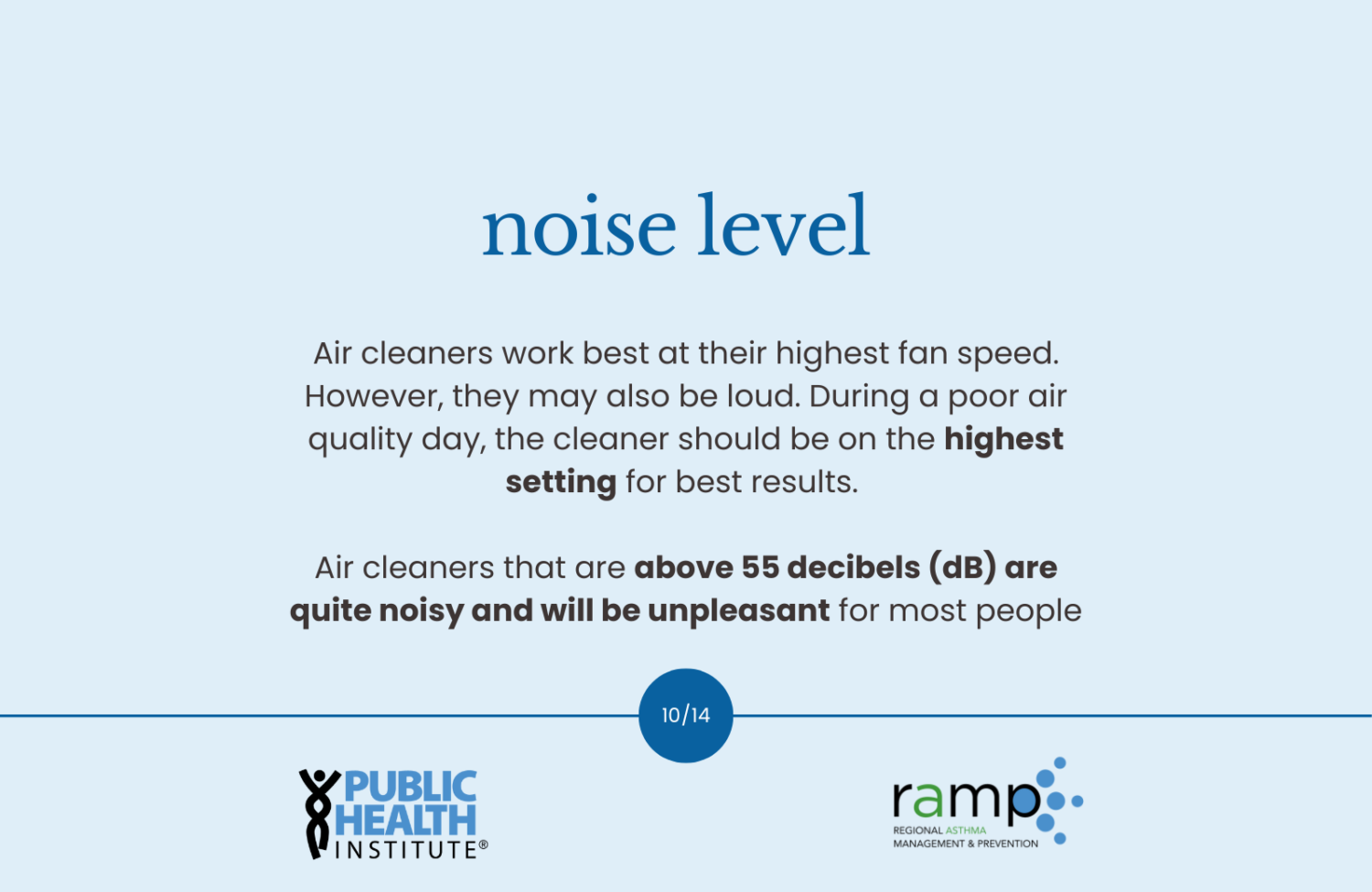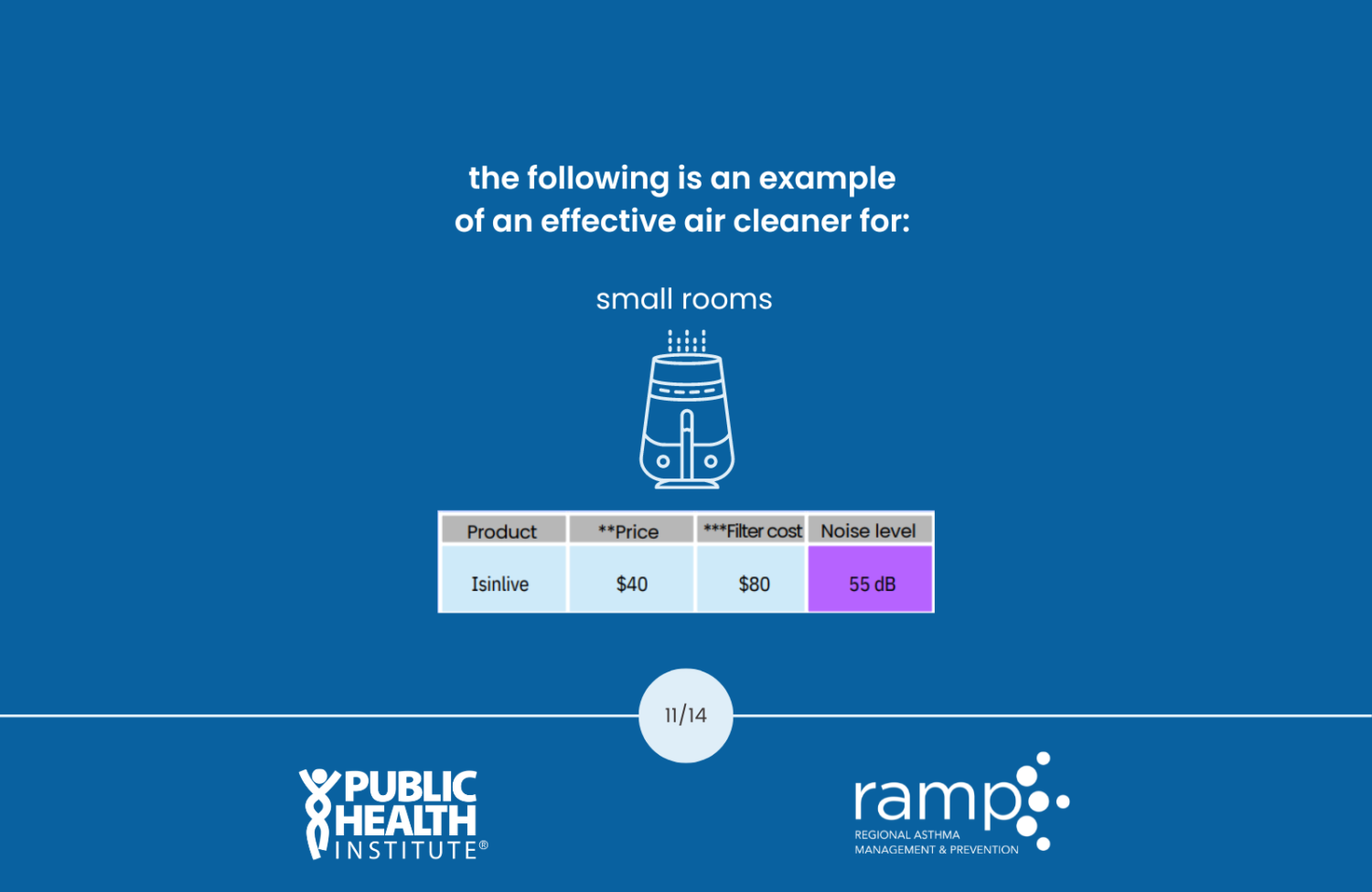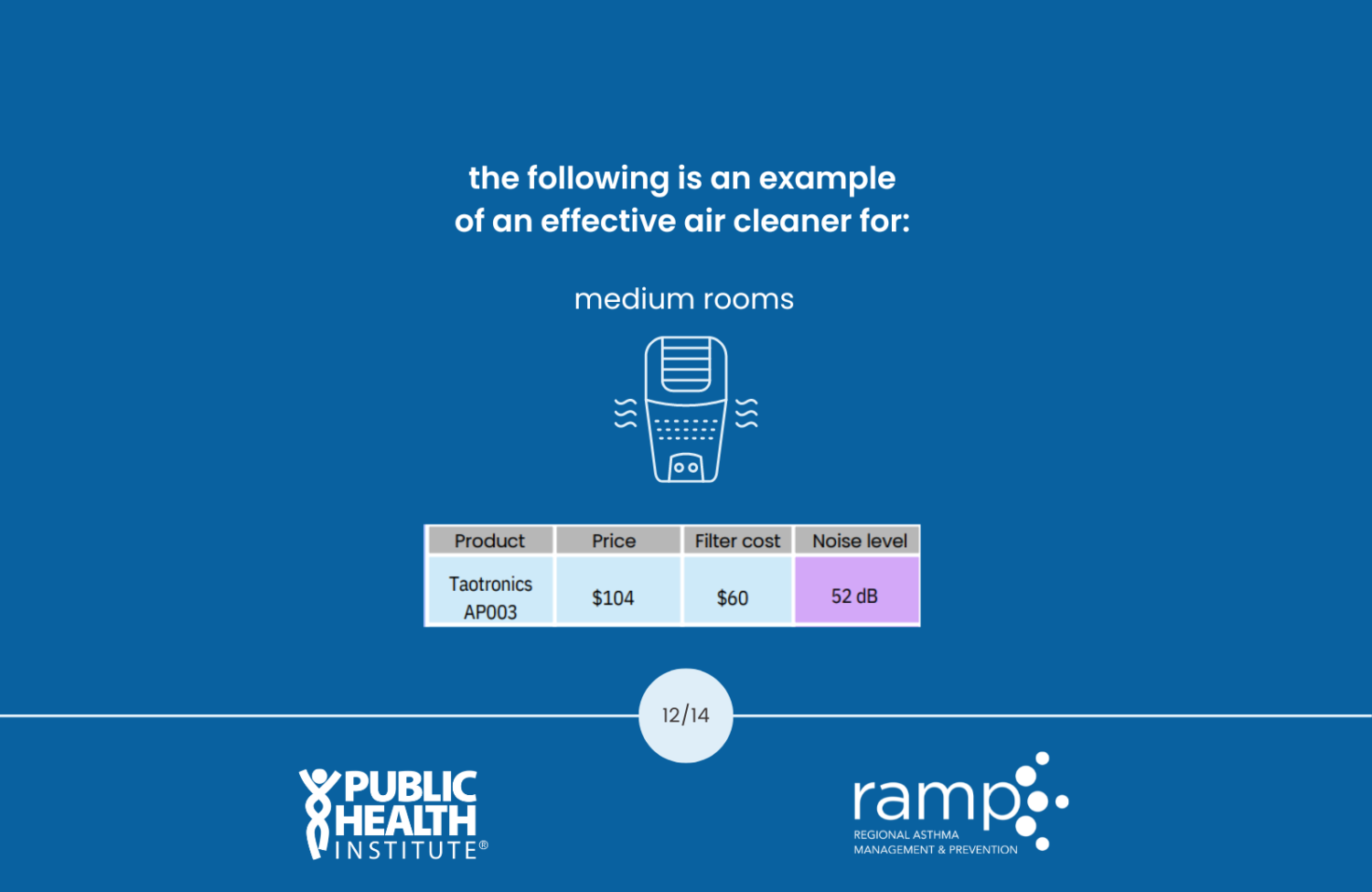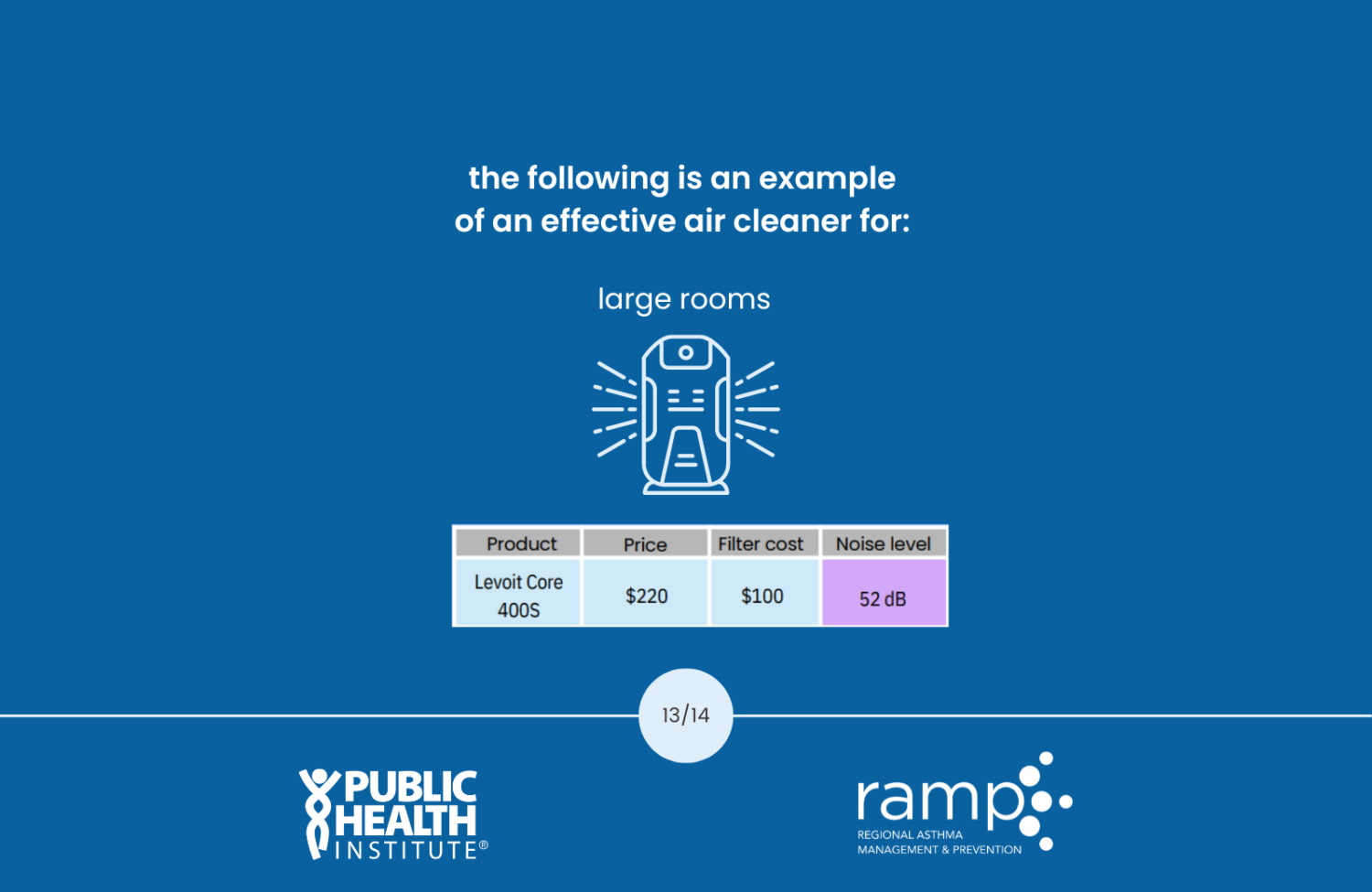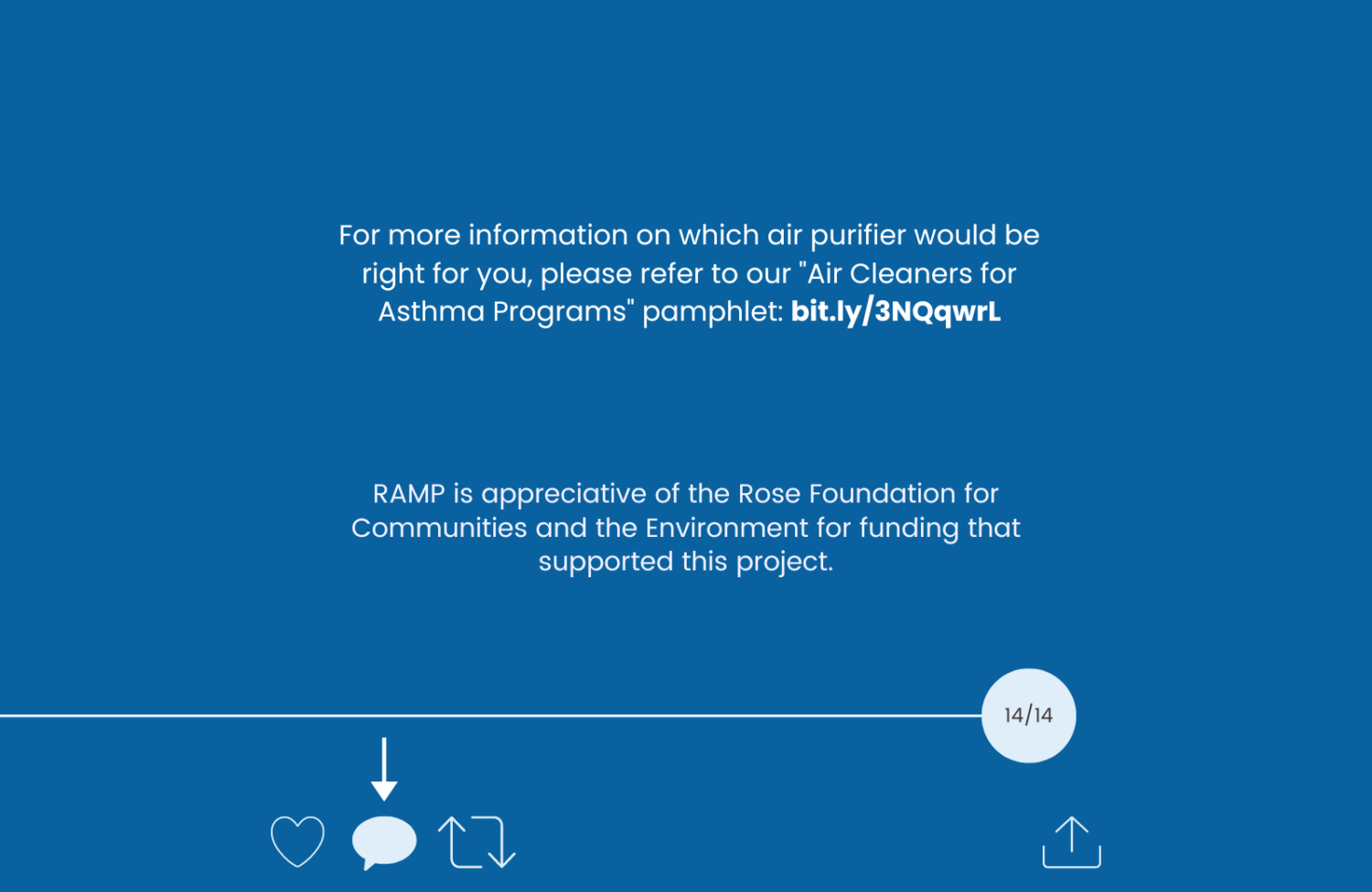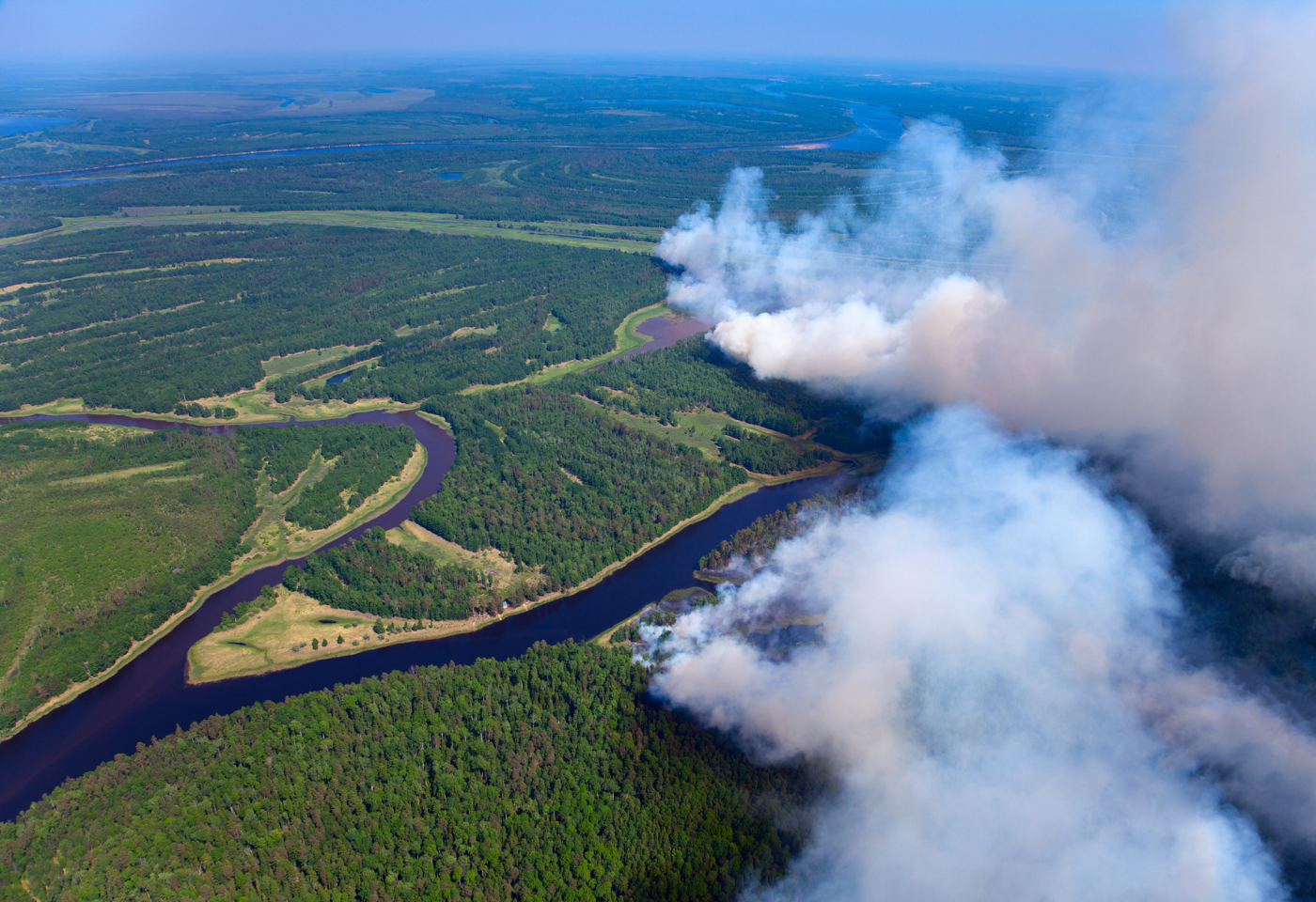
Factsheets & Resources: Choosing Safe, Effective & Affordable Air Cleaners
- Anne Kelsey Lamb, MPH
- Joel Ervice
- RAMP (Regional Asthma Management & Prevention)
-
Focus Areas
Environmental Health -
Issues
Asthma, Wildfires & Extreme Heat -
Expertise
Health Education & Promotion -
Programs
Regional Asthma Management and Prevention Program

People with asthma are at risk of exacerbation from wildfire smoke exposure, and the number and length of wildfires in California have been growing in recent years.
Air cleaners, also known as air purifiers, can greatly improve indoor air quality, but they are often cost-prohibitive for low-income families. Navigating the complex field of products is challenging as they vary widely in cost, performance and safety.
PHI’s Regional Asthma Management and Prevention (RAMP), in partnership with PHI’s Dr. Gina Solomon, has developed materials for consumers, agencies and programs, and schools to help choose safe, effective, and affordable air cleaners. These resources may be useful for families and individuals with asthma seeking to purchase or access air cleaners for personal use:
- Factsheets: How to Choose a Safe & Effective Air Cleaner: for Consumers, for Agencies and Programs, for Schools
- Examples of Air Cleaners for Asthma Programs (spreadsheet)
- The Best Ways to Use an Air Cleaner (see videos below)
- Factsheets: Preparing for Wildfire Smoke Events, including tips for asthma educators to educate and prepare their clients
- Air Cleaners for Asthma Programs fact sheet [En Espanol]
Videos: The Best Way to Use an Air Filter
In these videos, PHI’s RAMP shares tips, in English and Spanish, on how to use your air filter:
How to Choose a Safe & Effective Air Cleaner: Factsheet for Consumers
Air cleaners, sometimes called air purifiers, can help clear out wildfire smoke particles and improve indoor air quality.
When choosing an air cleaner, make sure :
- ✓ It is a mechanical air cleaner with a HEPA filter
- ✓ It is the right size for the room where it will be used
- ✓ It is CARB certified
What type of air cleaner is best?
Mechanical air cleaners with High-Efficiency Particulate Air (HEPA) filters or filters rated MERV-13 and higher are best. Electronic air cleaners may produce ozone or other byproducts in the air that can be harmful to health. You can avoid electronic air cleaners by avoiding products that use terms like: ionizer, electrostatic precipitator, plasma, photocatalytic oxidation, hydroxyl generator, or UV light. Some air cleaners have both a HEPA filter and an electronic component, such as an ionizer. If your air cleaner has both, we recommend turning the ionizer function off.
Why is room size important?
Air cleaners are made to clean different sized rooms. It is important to use one that is powerful enough to clean the amount of air in the room where it will be used. The clean air delivery rate (CADR) tells you how much air the air cleaner cleans hourly. This is measured in cubic feet per minute (cfm). Use an air cleaner with a CADR up to 200 cfm for a small room, 200-300 cfm for a medium-sized room, and more than 300 cfm for a large room.
Is it CARB certified?
All air cleaners sold in California must be certified by the California Air Resources Board (CARB) and you can check their list here. Even if you don’t live in California, your healthiest choice will likely be a CARB-certified air cleaner. CARB certifies both mechanical and electronic air cleaners. We recommend choosing mechanical air cleaners.
Never purchase an ozone generator.
Ozone generators, which are portable “air cleaners” that intentionally create ozone, should never be used in homes, schools, or any space where people may be present. There are companies that try to sell the idea that breathing ozone is actually healthy, but even low concentrations of ozone are harmful to health. It is well-documented that ozone can cause respiratory tract irritation and inflammation, serious breathing difficulty including asthma, permanent lung damage, and cardiovascular effects. Ozone generators are illegal for most uses in California. There are some limited legal uses of these devices under controlled conditions in vacant spaces to kill pathogens and neutralize odors, but they should never be used in any space where people may be present.
Other things to consider:
Cost: Air cleaners and replacement filters are expensive, so we encourage agencies and organizations to provide air cleaners to community members when possible. If your program is unable to buy air cleaners, you can inform clients about less expensive options like the DIY box fan. Here’s a construction guide for a Corsi-Rosenthal Cube. There are very effective air cleaners for $250 or less.
Energy efficiency: The Energy Star label means that the product uses energy efficiently. This saves money and helps the environment.
Noise level: Air cleaners work best at their highest fan speed. However, they may also be loud. During a poor air quality day, the cleaner should be on the highest setting for best results. Air cleaners that are above 55 decibels (dB) are quite noisy and will be unpleasant for most people.
Independent testing: Association of Home Appliance Manufacturers (AHAM) certification means that the product is independently tested & rated for its ability to clean the air. Manufacturers pay for AHAM to evaluate their products, so an air cleaner may still be good even if it is not certified by AHAM.
Additional Resources
-
- Examples of Air Cleaners that meet these criteria
- Videos on how to use and maintain an air cleaner in English and Spanish.
Work With Us
You change the world. We do the rest. Explore fiscal sponsorship at PHI.
Support Us
Together, we can accelerate our response to public health’s most critical issues.
Find Employment
Begin your career at the Public Health Institute.
